The brand identity framework reinforces Gush’s belief that small everyday actions by individuals can drive big, purposeful global change.
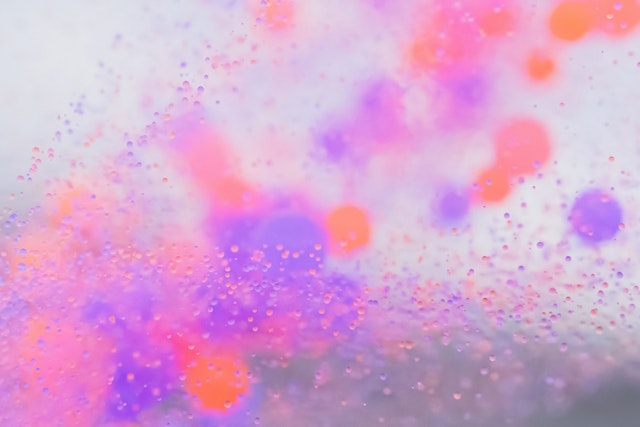
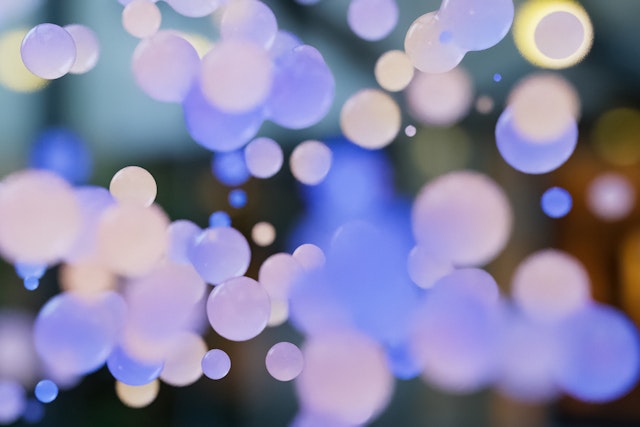

Visually, the aesthetic is both scientific and creative, and exudes positivity, like a breath of good air.
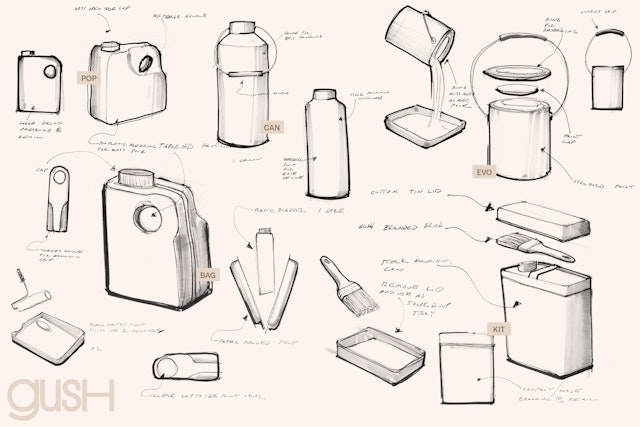
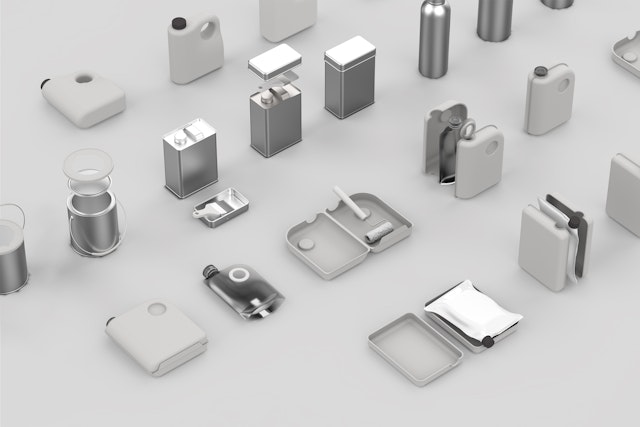
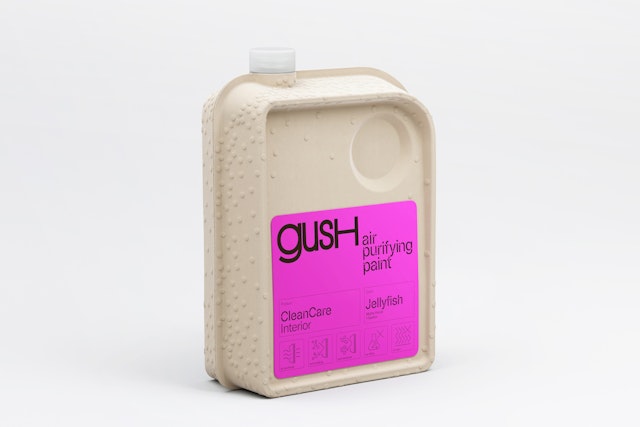




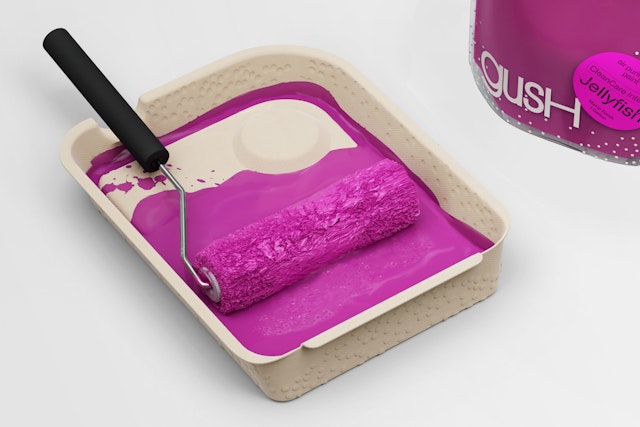
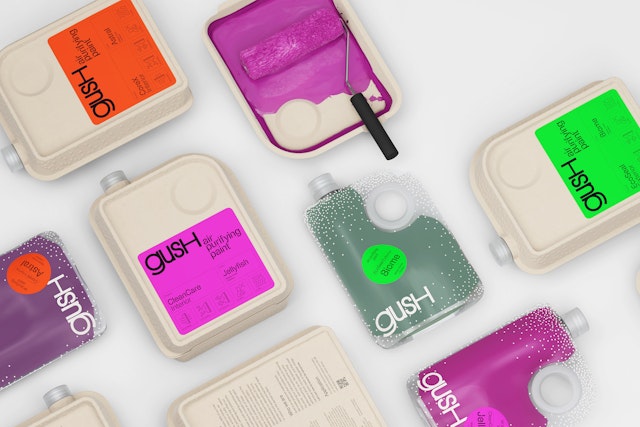
The logo is built of dots that evoke molecules or particles in the air coming together into a larger form—like a globe or community composed of individuals.

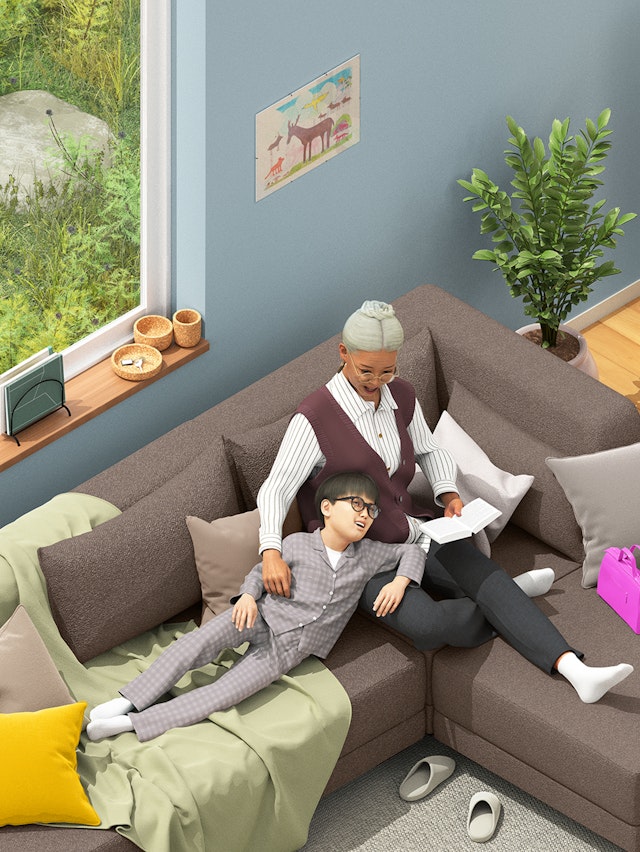
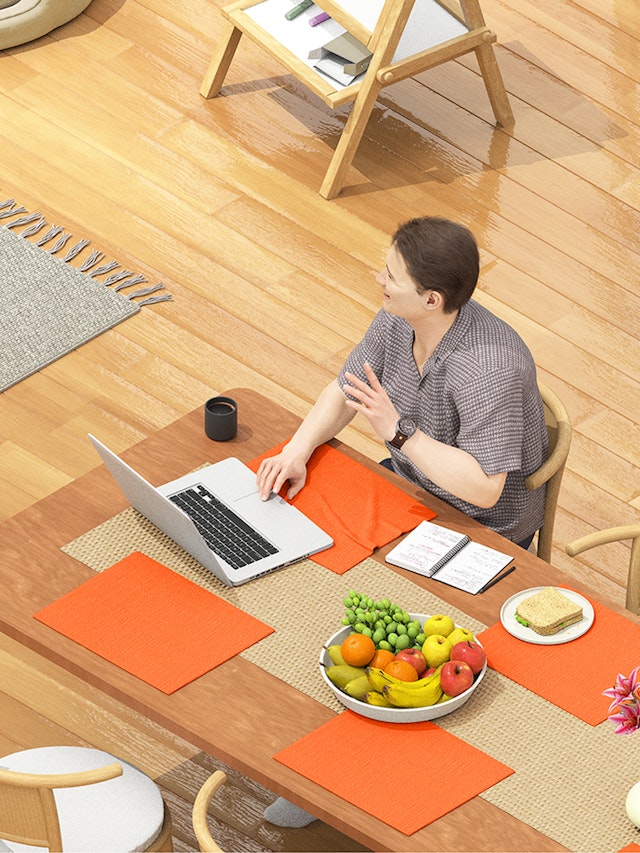

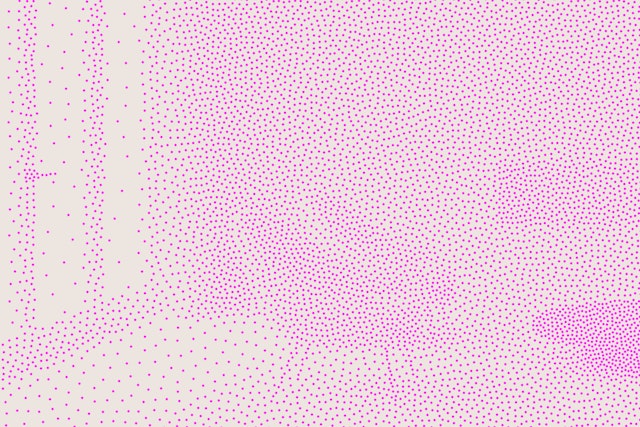
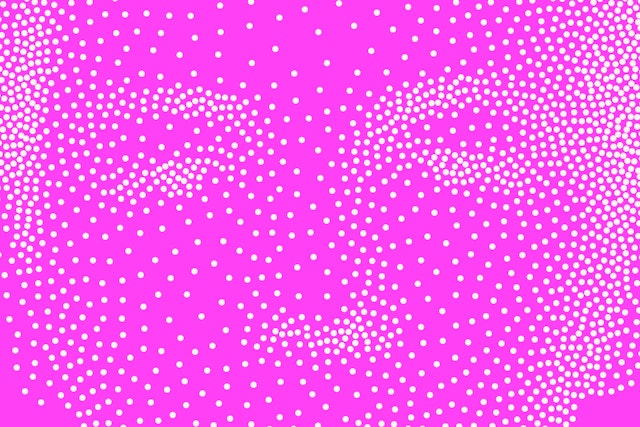


The particles extend to a dynamic visual language, where they are integrated into imagery, dispersed in motion graphics, and used to construct data visualizations.
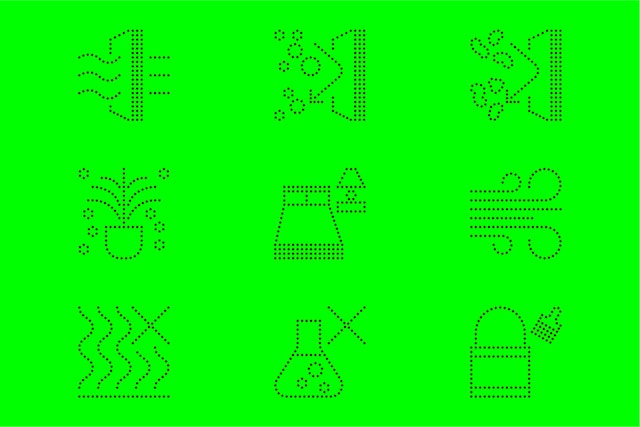

The packaging is sleek, modern and minimal, with a square footprint that is more efficient and made of low-impact materials.
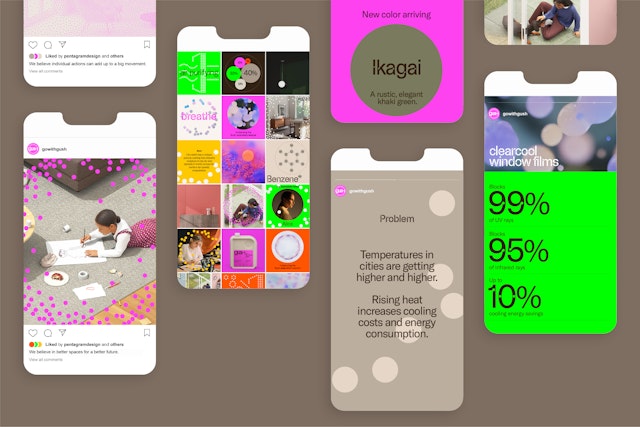
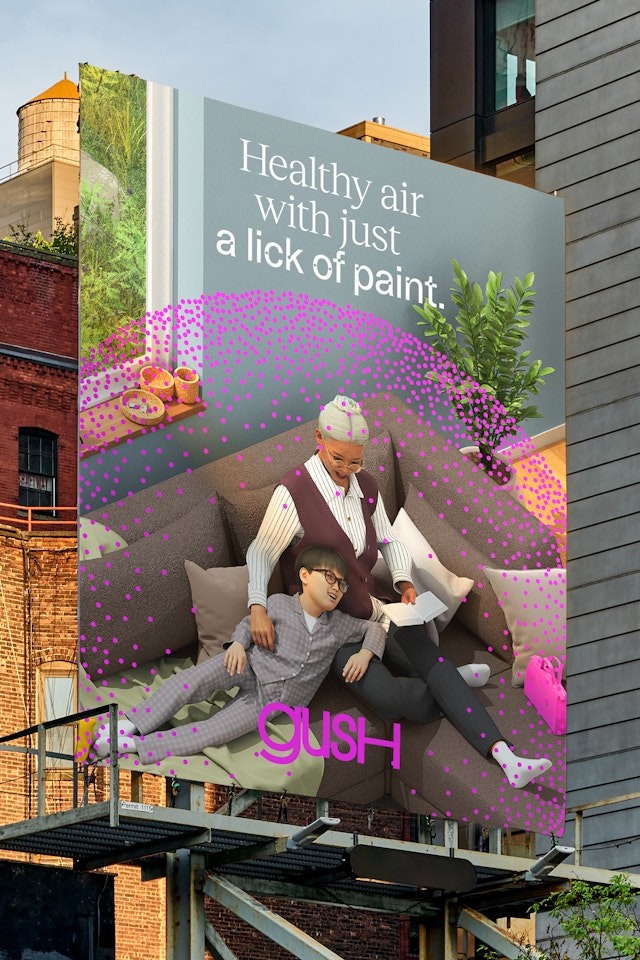

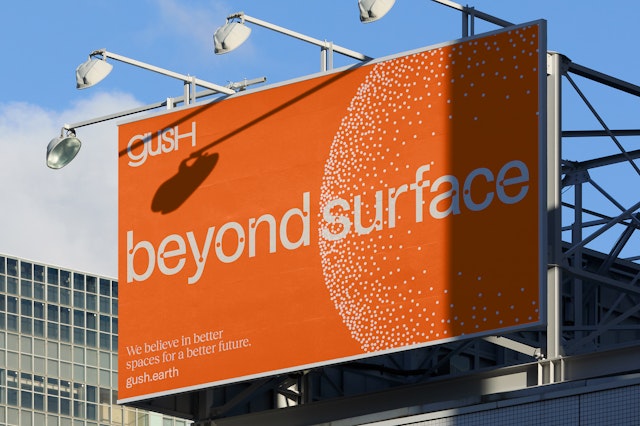
To achieve a truly sustainable future, it is necessary to build circular systems in which products, materials and the people who use them actively work together to form closed “loops” that recycle and regenerate. Gush is an advanced materials brand that offers breathable, air-purifying paint and other products that promote wellness and sustainability in the built environment. Beyond sprucing up homes, these help to safeguard the planet.
Pentagram has developed a brand identity framework for Gush that reinforces the company’s belief that small everyday actions by individuals can drive big, purposeful global change. The program encompasses brand strategy and messaging that invites consumers to meet the challenge of sustainability, and packaging for the paint that is innovative and eco-friendly.
The Singapore-based Gush teamed up with leading scientists and researchers to innovate a proven paint formulation that rids the air of pollutants like Volatile Organic Compounds (VOCs)—gasses released from products like cleaning liquids, aerosols, furniture and electronics. The interior paints keep indoor air quality levels healthy by empowering walls and ceilings with air-purifying features. Most people are now spending almost all their time indoors, and the paint transforms the largest surface areas into passive air purifiers. (And unlike air purifiers, Gush paints remove these pollutants without any electrical costs, saving energy.) Gush is accredited by the US Green Building Council, and its products address several of the Global Goals for Sustainable Development, including Good Health & Wellbeing, Responsible Consumption & Production, and Climate Action.
Pentagram developed a brand strategy for Gush that conveys the idea that its paint makes a deeper impact, reflected in the brand line, “Beyond Surface.” The identity also expresses that wellness is plural, not singular, and by working together, we can “create a world we can gush about.” The spirit of the brand is bright and joyful, connective and optimistic, and visually, the aesthetic is both scientific and creative, exuding positivity, like a breath of good air.
“Our vision for Gush’s brand identity was clear from the start—to meld our deep respect for the environment with a sleek, modern design,” says Gush CEO Lester Leong, who collaborated closely on the project with the Pentagram team. “The success of the design lies in its simplicity and its message.”
“What I personally love about our new identity is its understated elegance,” he says. “It speaks volumes about our values without saying a word. It’s a design that invites you to be part of a movement, a community that cares.”
The identity centers on a circular symbol that explores the concept of the many making up something bigger than themselves. The logo is constructed of dots that evoke molecules or particles in the air coming together into a larger form—like a globe or community composed of individuals. Simple but scientific, the mark can evolve and change across scale, adding or subtracting particles for visual balance, or play with optical illusion. The density of the particles may vary, from a chain to a cluster to a cloud.
The logo is accompanied by a wordmark that balances a graceful lowercase “g” at one end with an architectural uppercase “H” at the other, with the condensed “us” embraced in between, hinting at the community at the brand’s core. The shifting weight of the letterforms gives the logotype the appearance of “breathing.”
The particles of the logo extend to the brand’s dynamic visual language, where they are integrated into imagery, dispersed in motion graphics, and used to construct data visualizations. The circular forms can appear as flat dots in graphic patterns or as tactile spheres in immersive 3D renderings. Operating expressively, they may form stippled photographic images or be used to create icons.
The particles appear in the brand typeface itself: ABC Camera was selected for the circular light traps or “holes” in the lines of its letterforms. For a human touch, this is balanced by the contemporary serif Reckless Neue as the secondary display typeface, while copy is set in GT America. Four vibrant neon colors make up the brand palette––pink, orange, green and yellow–– used in contrast with warm neutrals.
The designers wanted to completely rethink paint packaging and find a more sustainable solution. Working with the product designer Piotr Woronkowicz, they developed a new container that is sleek, modern and minimal, with a square footprint that is more efficient and made of low-impact materials.
The design of a can of paint hasn’t changed much since its invention in 1868. The round metal containers waste space when shipped on pallets, and around 75 million gallons sold in the US each year go unused and are thrown away in the trash, where they can harm the environment if not managed properly. (The round shape originated because it prevented paint from getting stuck in the corners, a problem the Gush packaging also avoids.)
Each Gush container opens into two trays, with the paint housed in a transparent bag between them. Made of low-impact, biodegradable acetate, the bag has a flat bottom so it can stand upright and a clear cap to see the color. The container is made of molded paper pulp, which has never been used before for paint trays in the US. The circular handle echoes the shape of the Gush symbol, and a bubble pattern of particles is embossed into the molded pulp. The packaging is currently being fabricated and will be introduced in the coming year.
“This rebranding is not just a change in visuals; it’s a manifestation of our journey, our growth, and our aspirations,” says Leong. “It’s incredibly exciting to think about how this new phase of Gush will resonate with people who not only want to make sustainable choices but also appreciate the beauty in those choices.
“The feedback we’ve received has been heartwarming,” he says. “Our customers appreciate the thoughtful design, seeing it as a symbol of their own commitment to the environment and well-being. This positive response reaffirms our belief that good design can inspire change and connect people.”
Client
GushSector
- Manufacturing & Industrials
Discipline
- Brand Identity
- Packaging
- Industrial/Product Design
- Brand Strategy
Office
- New York
Partners
Project team
- Jack Collins
- Brankica Harvey
- Issabella Hindley-Cupper
- Ruben Gijselhart
- Chauncey Zhang
- Justin Zhang
- Ruairi Walsh
- Dana Reginiano
Collaborators
- Rachel Kash, brand strategy
- Rebecca Vandesande, brand strategy
- Joseph Toereki, particle renderings
- Setu Choudhary, particle animation
- Max Guther, illustration
- Goeun Choi, packaging renderings
